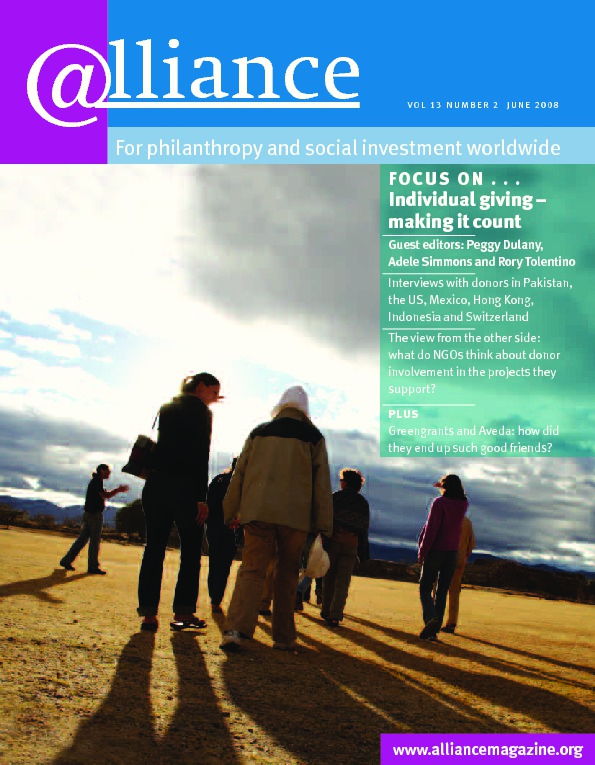From 4 to 7 May, over 3,000 people gathered in the greater Washington DC area in what I am told was the largest assembly on philanthropy in history. Some 80 plus concurrent sessions, 11 site visits, a cluster of Advanced Practice Institutes, 6 mini-summits, and 6 plenaries later, what did it all add up to? My answer to that is that it was a step in the right direction.
The concern prior to the meeting that the Summit would try to foist one vision on philanthropy seems deserving of no more than a chuckle in hindsight. But the notion that philanthropy was on the verge of becoming a global movement sounded a chord that resonated throughout the meeting. In fact, at times it seemed to be overplayed as philanthropy became the sector rather than a slice of civil society. My concern is that divorcing philanthropy from civil society is counter-productive since, for the most part, philanthropy conducts its business through the operating institutions of civil society.
The big tent – an attempt to get as many as possible of the different models of organized philanthropy, as well as some aspects of individual philanthropy, to attend a single meeting and in addition to structure that meeting in such a way that as many sessions as possible would cut across the lines that segment philanthropy – is harder to assess. My feeling is that it worked, but only because a compromise was reached to allow the segments their due in the two days leading up to the Summit. A reminder of how powerful the need is for ‘birds of a feather to flock together’.
Let’s be clear, we had examples of all the little annoying things that can and will happen at every large meeting. Some talk seemed misplaced, some people abused the audience by talking too long, there were a few technology glitches, and the cavernous facility we were in could hardly be considered warm and cuddly. But at no time did I hear any significant criticism of the major elements that provided structure and substance to the Summit.
The three themes of leadership, partnership and impact not only met the test but are likely to reappear at next year’s meeting. The diversity plenary moved beyond preaching to the choir to wrestling with the complexity of crafting policy when two cherished values are in conflict. The human rights plenary was for many the highlight of the Summit and successfully connected what goes on outside the borders of the US with its relevance for the domestic area. And no one would quibble with the notion that the cohort of emerging practitioners in philanthropy infused the meeting with energy and that scholarships for this group should be increased next year.
But of all the differences between this meeting and those of the past, it was the international component that was most stunning. My estimate when we started the planning process for the Summit was that our target of 3,000 participants would be hard to reach, and that if 5 per cent were from outside the US it would be a worthy achievement, and far more international participants than had ever attended a Council on Foundations meeting before. In fact, as mentioned above, over 3,000 participants attended and almost 10 per cent were from outside the US. This was no doubt assisted by the scholarships made available by a few funders, but even without these the international attendance would have broken all records.
The buzz in the meeting rooms and in the hallways signalled that US participants thoroughly enjoyed engaging their counterparts from outside the country and the good feelings were reciprocated. The interaction gave teeth to what many have preached in the past – that experiences and learning do indeed cross borders as we collectively try to deal with so many issues that we face in common. Time and again there was reference to an emerging philanthropic movement, and while I would prefer to call it a global civil society movement, the enthusiasm was infectious. In fact, it led me to say in my closing remarks that it is time for us to push for a UN-sanctioned ‘International Year of Giving’. Such a year could help stimulate a culture of giving around the world and strengthen the march towards expanding an enabling environment to all countries.
If an ‘International Year of Giving’ were to become a reality, it seems appropriate that it should be launched by a ‘Global Summit on Philanthropy’, planned by representatives from the various associations of philanthropy and WINGS, their worldwide network, and attended by the leaders of all the models of philanthropy. That is the reason for calling this Summit ‘a step in the right direction’.
Barry D Gaberman can be contacted at bgaberman@gmail.com


Comments (0)